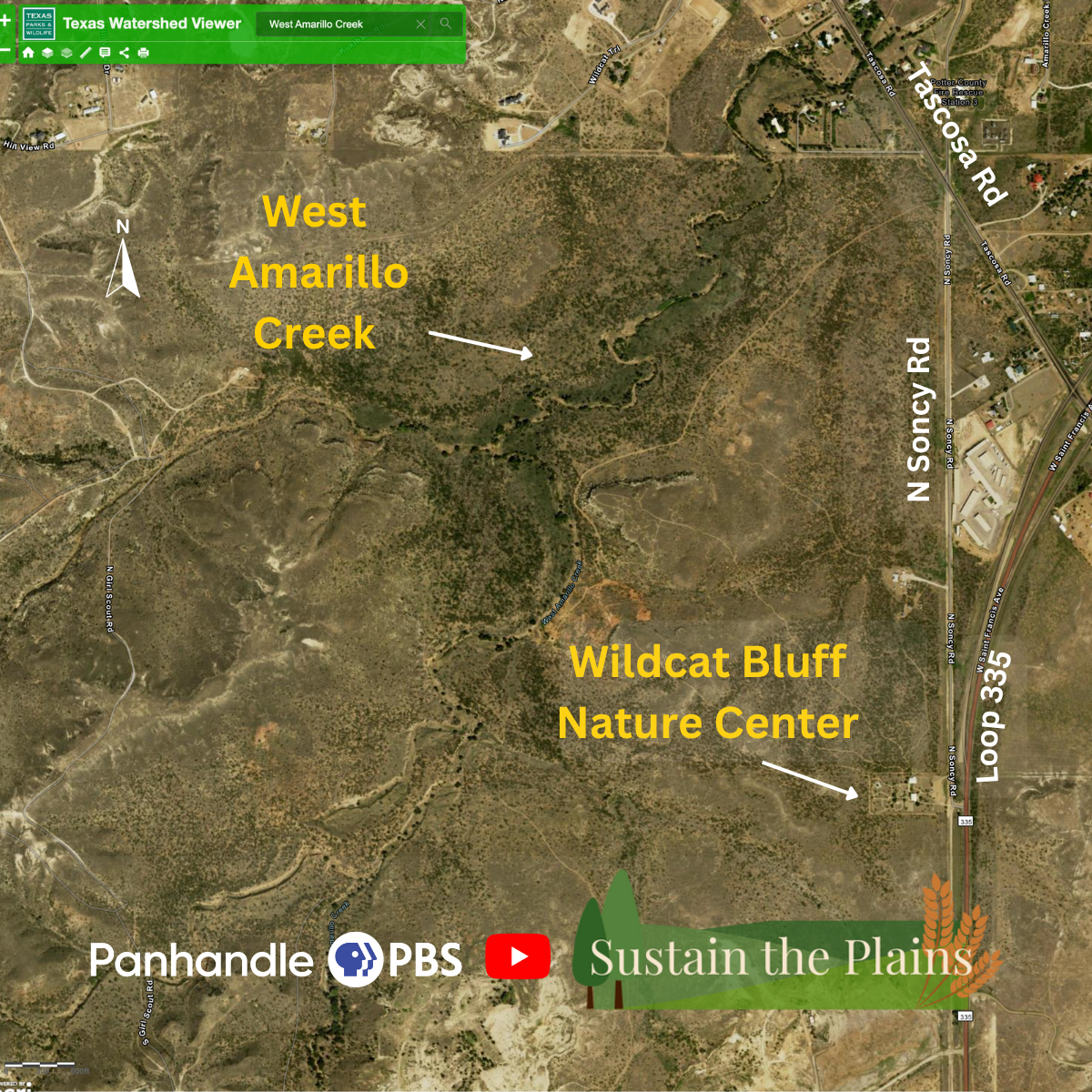I love GIS (Geographic Information System) maps — all that power to zoom in and out on a particular subject.
The Texas Watershed Viewer, an online tool provided by Texas Parks & Wildlife, offers a way to explore waterways across the state, from massive rivers to small streams.
At Panhandle PBS, we needed a way to help folks visualize the location of West Amarillo Creek as it crosses Wildcat Bluff Nature Center on Amarillo’s northwestern edge. A nonprofit called Ogallala Life Inc. has been experimenting with “rehydrate” the land along a stretch of the creek.
You can learn more about that in this week’s episode of Sustain the Plains on the Panhandle PBS YouTube channel. But a quick explanation is that the work looks to transform the creek from being a deep crevice that chutes stormwater off the landscape to being a flatter area where water will soak in, possibly helping to recharge the Ogallala Aquifer deep below.
Generally, West Amarillo Creek doesn’t see much water, except during periods of rain like we’ve had recently. And, the Ogallala Aquifer is the primary source of fresh groundwater for the Texas Panhandle. Scientists have estimated the aquifer won’t be able to supply water for irrigated agriculture in this region within a generation or two.
The Texas Watershed Viewer can help you understand waterways and their watersheds. A watershed is an area to which all water flows in a geographic region. West Amarillo Creek, and its sister, East Amarillo Creek, are just two tributaries that flow to the watershed of the Canadian River, which runs west to east from New Mexico across the Texas Panhandle to where it meets the Arkansas River in Oklahoma.
You can use the viewer to learn more about the streams and rivers in our area and across the state, as well as to see the watersheds of other water bodies such as Lake Meredith, which is fed by the Canadian.
Texas Parks & Wildlife also offers an extensive watershed curriculum to educate Texans about the state’s most precious natural resource. Those who follow the curriculum can obtain advanced training, become certified as a Texas Waters Specialist, and give back to their community by performing volunteer servicein such areas as conservation, ecology, education and stewardship.
If you’d like to learn more about water, water conservation and sustainability, subscribe to Sustain the Plains, our YouTube series.






